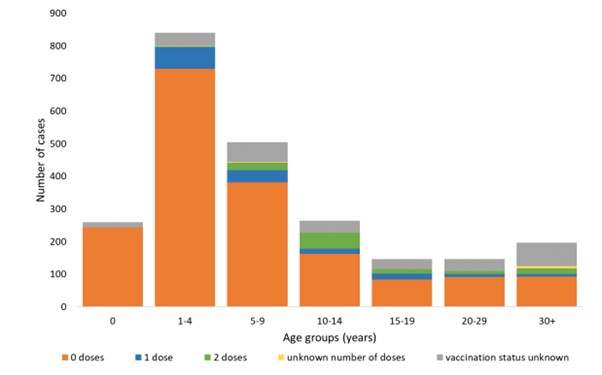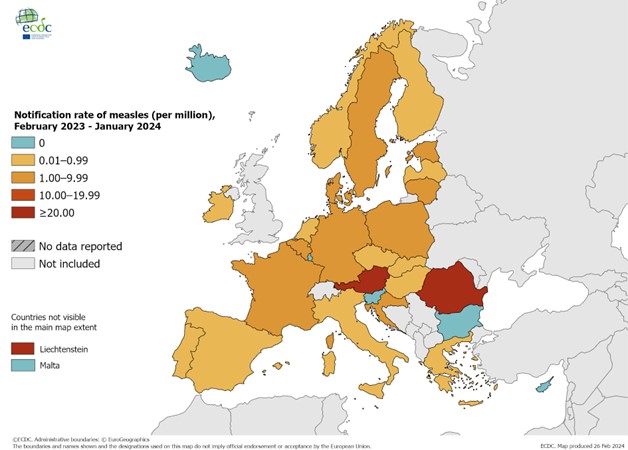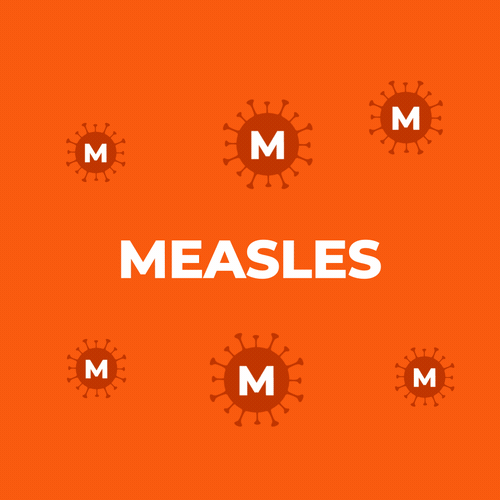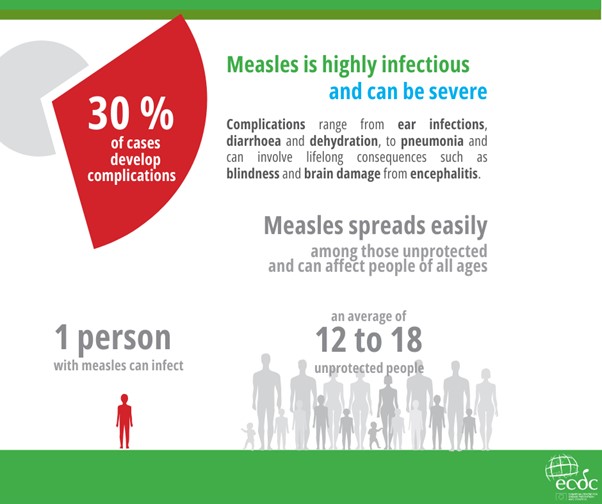The first measles vaccine was introduced in 1963, triggering a decline in the number of cases of the disease in the decades that followed. It might have been tempting at that time to expect the disease to be consigned to the history books. However, sixty years later, measles continues to circulate in Europe despite access to free vaccination.
The European Centre for Disease Prevention & Control (ECDC) recorded more than 2,000 measles cases in 2023. A significant proportion of these cases were in Romania, where children (aged 1-4 years) are worst affected. Doctors in Romania sounded the alarm two years ago, warning that uptake of the measles, mumps and rubella (MMR) vaccine had fallen below 50% in some areas.
Prof Mihai Craiu, a well-known paediatrician who operates a popular Facebook page with 300,000 followers, renewed his appeal to the public last year as the epidemic spread.
‘Unfortunately, MMR coverage is declining post-pandemic, amid general mistrust in vaccines here in Romania,’ he told Vaccines Today. ‘And the current outbreak demands a more vigorous response from authorities.’

Data from Romania’s National Institute for Public Health suggest the situation may be even more alarming than the ECDC’s record of confirmed measles cases. The national authority reported 7,243 cases, and eight deaths, from January 2023 to March 5, 2024.
There are also cases in other EU countries where the age profile of patients varies. For example, there have been outbreaks among children aged 10-14 in France and among adults aged 30 years and older in Germany, Italy and Netherlands. Most cases are in people who have not been vaccinated against measles.
In January and February 2024, outbreaks continued in several countries, including Austria where hundreds of cases were recorded last year.
There is real concern among health officials that measles vaccination rates are below the 95% target in several European countries. This puts people at risk of infection and, in the event of a large outbreak, may make health systems vulnerable to a surge in demand for care.

Authorities say the number of measles cases is expected to continue increasing in the coming months, with the virus likely to spread to areas where vaccination is too low. Outbreaks may peak in the coming months as more people develop immunity after infection.
However, with one third of infected people suffering complications of the disease, acquiring immunity in this way is likely to take a toll. At least seven deaths have been recorded in two countries this year already, according to the ECDC. There, of course, another ‒far safer ‒ way to be protected: vaccination.
‘Nobody should die from measles,’ says Andrea Ammon. ‘The increase in cases of measles, a highly contagious, but vaccine-preventable disease, is a stark reminder that all Member States should maximise efforts to achieve and maintain high vaccination coverage for all vaccine-preventable diseases. Vaccines are a safe and effective way to reduce the health burden of infectious disease and avoid unnecessary loss of life.’

The ECDC called for intensified efforts to identify and reach unvaccinated or partially vaccinated populations. Equity in access to immunisation should be ensured, it said, especially for vulnerable populations including migrants, ethnic minorities, and those living in crowded settings such as refugee camps.
European Commissioner for Health, Stella Kyriakides, said the current trend is worrying, and points to low uptake of routine vaccines. ‘This is an extremely contagious disease which can cause serious complications, particularly for children and vulnerable personas,’ she said, urging people to check their vaccination status. ‘When we see measles outbreaks, we know there is a gap in vaccinations,’ she said. ‘Vaccination is one of our strongest tools against measles and many other infectious diseases.’

Measles symptoms
Measles is a highly contagious viral disease that can be contracted at any age. It is significantly more infectious than, for example, COVID-19. It can lead to complications and even death. Measles symptoms usually appear after 10-12 days of infection:
- Initial symptoms resemble a cold with a runny nose, cough and a mild fever;
- Eyes become red and sensitive to light;
- On the third to seventh day, the temperature may reach up to 41 ⁰C;
- A red rash begins on the face and then spreads over the entire body;
- Small white spots may also appear on the gums and the inside of the cheeks.






Pingback
April 24th, 2024
[…] Read more: Measles on the rise in Europe (again) […]